DESCRIPTION:
California sea lions are known for their intelligence, playfulness, and noisy barking. Their color tends toward chocolate brown, although females are often a lighter golden brown. Males may reach 1,000 lbs. (more often 850 lbs.or 390 kg) and 7 feet (2.1 m) in length. Females grow to 220 lbs. (110 kg) and up to 6 feet (1.8 m) in length. They have a “dog-like” face, and around five years of age, males develop a bony bump on top of their skull called a sagittal crest. The top of a male’s head often gets lighter with age. These members of the Otariid, or walking seal, family have external ear flaps and are equipped with large flippers which they use to “walk” on land. The trained “seals” in zoos and aquaria are usually California sea lions.
In 1970 , Trevor Anderson reported to David Hancock for the Journal article “California Sea Lion as a Regular Winter Visitant off the British Columbia Coast” that ” California Sea Lions had hauled out on rocks near the light every winter since 1966…. and a peak of population of 30 was reached in February, 1969.”
It is clear that the population of these animals has risen considerably over the years, and by 2007, up to 300 may haul out in the fall of the year. ( 500 in 2015)
They tend to move out of the dock area with the winter storms which bring swells from the North East. They also haul out mixed in with the Northern or Steller’s sealion.
- Compare the Northern Sealion on the left with the california sea lion beside . Mt Baker in the background
- In late August, the California Sea Lions arrive back in large numbers from the outer coast . By the end of October, they often number over 1000.
RANGE/HABITAT:
California sea lions are found from Vancouver Island, British Columbia, to the southern tip of Baja California in Mexico. They breed mainly on offshore islands from southern California’s Channel Islands south to Mexico, although a few pups have been born on Año Nuevo and the Farallon Islands in central California. There is a distinct population of California sea lions at the Galapagos Islands.
We keep track of the branded sealions at Race Rocks: two links: https://www.racerocks.ca/race-rocks-animals-plants/marine-mammal-tracking/
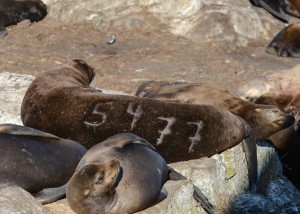 Records of Sea Lion brands: You can see the Ecoguardian’s notes and images of the branded sea lions in the log for 2011-2013 etc. here.
Records of Sea Lion brands: You can see the Ecoguardian’s notes and images of the branded sea lions in the log for 2011-2013 etc. here.
Previous photos and observations of tracking devices prior to 2011 can be seen in this linked file:
BREEDING
Sea lions do not pup at Race Rocks, it is strictly a winter haulout colony. Most pups are born on the outer coast to the South in June or July and weigh 13-20 lbs. (6-9 kg). They nurse for at least 5-6 months and sometimes over a year. Mothers recognize pups on crowded rookeries through smell, sight, and vocalizations. Pups also learn to recognize the vocalizations of their mothers. Breeding takes place a few weeks after birth. Males patrol territories and bark almost continuously during the breeding season. Gestation lasts about 50 weeks and lactation 5 to 12 months. The longevity is estimated to be around 17 years.
SUBSPECIES
Three subspecies are recognized: Zalophus californianus californianus (Lesson, 1828), Zalophus californianus wollebaeki (Sivertsen, 1953) and Zalophus californianus japonicus (Peters, 1866), each living in a clearly separate range. According to Rice (1998), the differences between these types justifies classification as separate species: Zalophus californianus, Zalophus wollebaeki and Zalophus japonicus
- Teeth of California Sea Lion: Photos by Ryan Murphy
- Rear flippers,doral and ventral sides.
- Scrotum of Zalophus californianus
- The sun had just come up when Ryan snapped this picture of the sea lions breath. RM photo
- Injury probably from boat propellors. See more of human impacts on sea lions here
- Looks like a pose for this californa sea lion. R.Murphy photo
- Wet fur on the stomach, dry on back, note color contrast.
- 2 sea lions with brands photos by G. Fletcher
 See this link to several archived videos of marine mammals. In particular note the effect of DND blasting on the colonies.
See this link to several archived videos of marine mammals. In particular note the effect of DND blasting on the colonies.
FEEDING HABITS
California sea lions are opportunistic feeders and eat such things as squid, octopus, herring, rockfish, mackerel, anchovy and whiting. The California sea lion competes with the Northern Sea Lion Eumetopias jubata for habitat and food.
NOTES
California sea lions are very social animals, and groups often rest closely packed together at favored haul-out sites on land, or float together on the ocean’s surface in “rafts.” They are sometimes seen porpoising, or jumping out of the water, presumably to speed up their swimming. Sea lions have also been seen “surfing” breaking waves.
The males are probably the most vocal of all mammals, and let out a loud incessant honking bark to protect over their territories. They are faithful to their territories, and to their harems of up to 15 females. Sea Lions swim up to 25mph which makes them one of the fastest aquatic carnivores.
Sea lions are known to damage fishing gear and steal or destroy fish in the nets. As a result a lot of California sea lions drown in nets and they are frequently shot at by commercial fishers. September, 2003 : This past few months we have seen three California and Northern Sea lions with fishing flashers hanging from their mouths. These animals pursue fishing lures , probably especially when live bait is used. They swallow the bait, and take down the meter plus length of leader line before the flasher comes to their mouth. The individuals will be seen for several days trailing these flashers. It is not known whether they eventually shed the flasher or whether this leads to an untimely death. Although they can pick up a flasher in waters at some distance from their haulouts, it certainly makes sense to restrict fishing activity when marine mammals are in the vicinity of a fishing vessel. This video shows a sea lion with a flasher in his mouth.
Sea lions are preyed upon by killer whales. Sea lions are known to have such diseases as pneumonia, caused by a parasitic lungworm, and a bacterial infection called leptospirosis, which affects their livers and kidneys.
Other problems for California sealions involve humans. Sea lions have been found illegally shot and also caught in drift or gill nets and other marine debris. However, their population is growing steadily, and California sea lions can be seen in many coastal spots.
At Race Rocks they can become a problem in the fall when they arrive in large numbers. We have to put up electric fencing to keep them from damaging the infrastructure on the island as they will crush pipes and instruments.
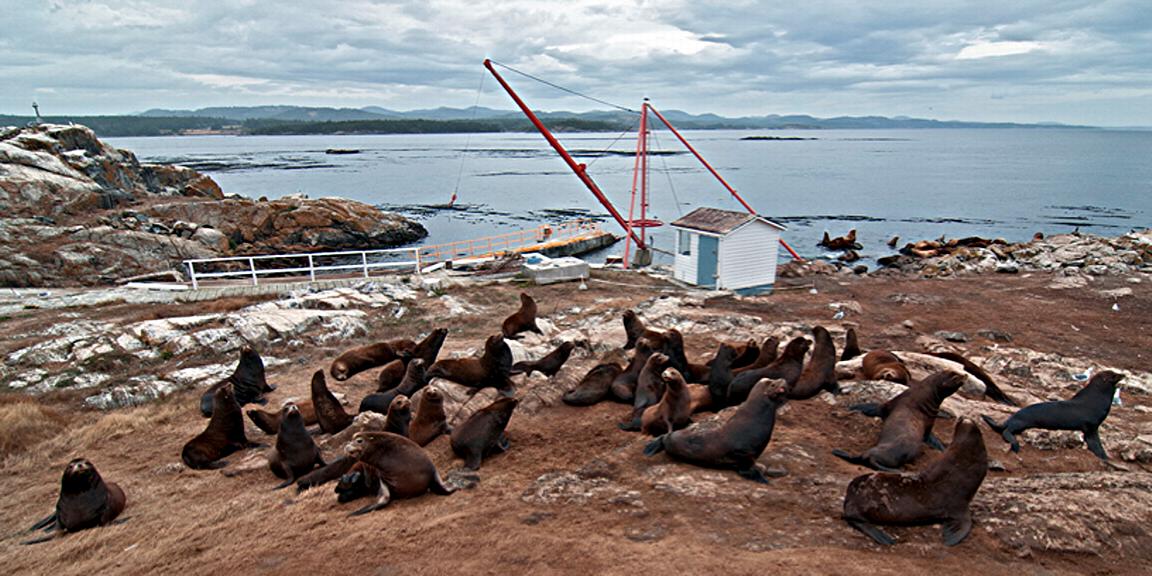
In the fall of 2011, the California sea lions were especially attracted up near the house in mid September . They all departed when an earthquake struck the north end of Vancouver island.
- Sept. 2007. California sea lions return to the docks as soon as he boat leaves.
- California sea lions at the stairs to the main residence.
- While boat occupants are ashore for a few hours the lions regain their spot on the dock.
- Reluctant to move from the docks, Sept 15, 2005
- Won’t even move as the boat docks.
The Californian Sea lion was once killed in great numbers for their blubber which could be made into oil, and the rest would be made into dog food. Today the seal lion is protected by international treaty which has led to a positive shift in their populations.
Unusual Events:
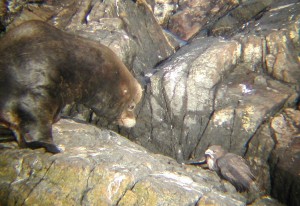 This unusual event involving a red-tailed hawk and a sea lion was observed in October 2003.
This unusual event involving a red-tailed hawk and a sea lion was observed in October 2003.
INJURIES:
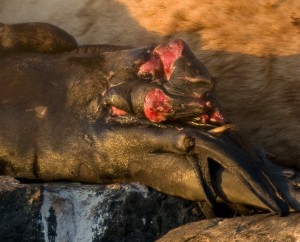 Sea lions bear the brunt of many actions by humans, many which could be avoided with more caution in driving boats through congregations of the mammals.
Sea lions bear the brunt of many actions by humans, many which could be avoided with more caution in driving boats through congregations of the mammals.
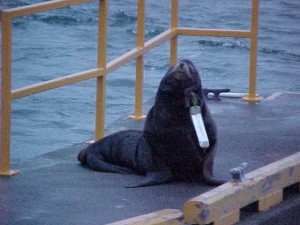 Fishers should bear some responsibility for the many instances of fishing flashers attached to hooks inside.
Fishers should bear some responsibility for the many instances of fishing flashers attached to hooks inside.
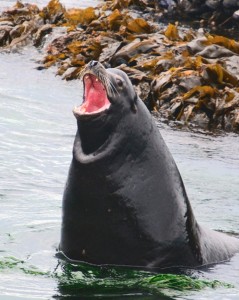 When the sea lions are present in great numbers, we are always seeing individuals with entanglements, usually in the plastic hoops that fishers use for net bundles, Posts at this tag show many examples of injuries and entanglements.
When the sea lions are present in great numbers, we are always seeing individuals with entanglements, usually in the plastic hoops that fishers use for net bundles, Posts at this tag show many examples of injuries and entanglements.
Domain Eukarya
Kingdom Animalia
Phylum Chordata
Class Mammalia
Order Pinnipedia
Family Otariidae
Genus Zalophus
Species californianus
Common Name: California Sea Lion
Other Members of the Class Mammalia at Race Rocks.

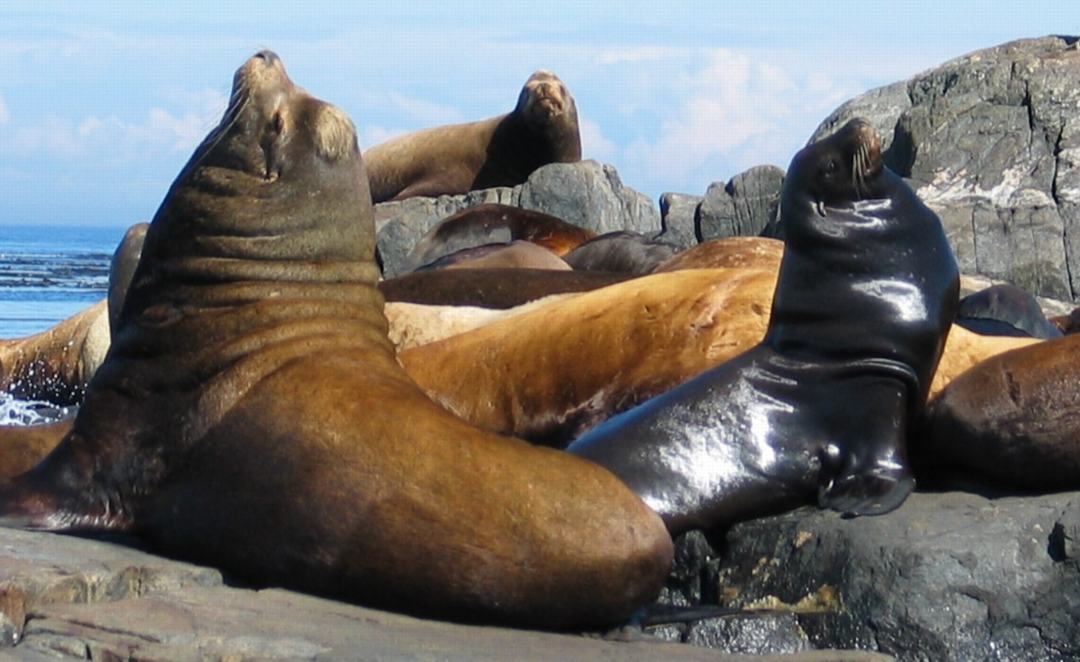
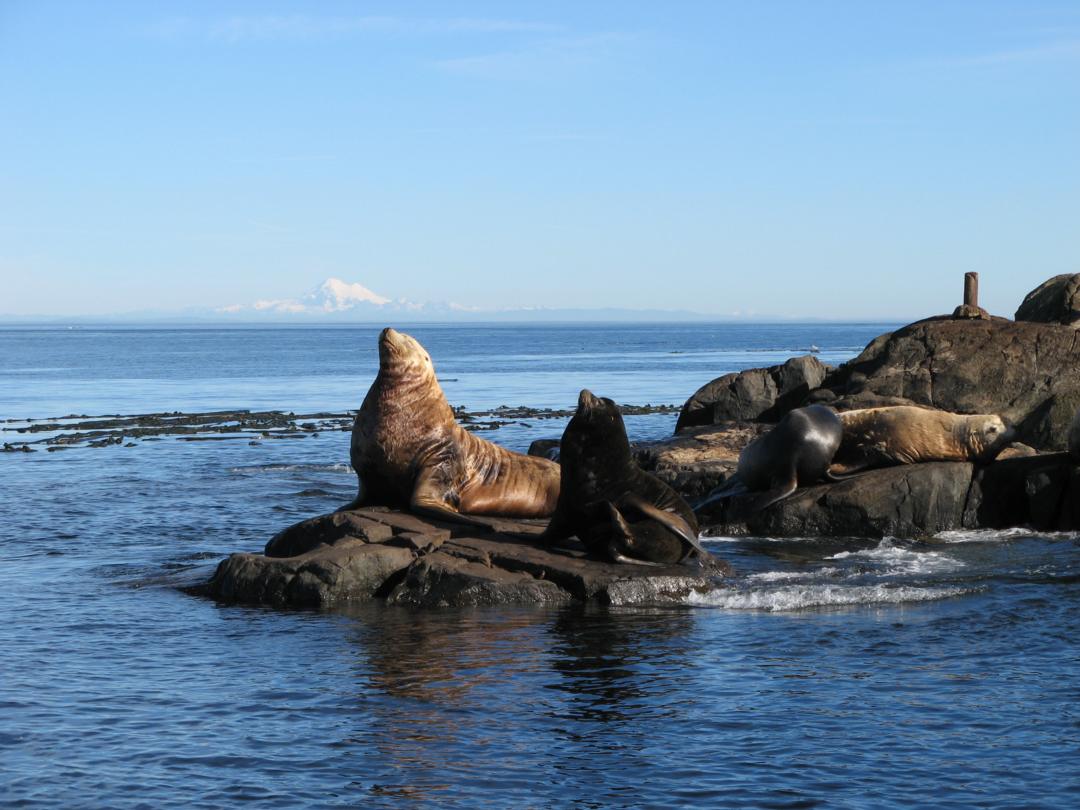
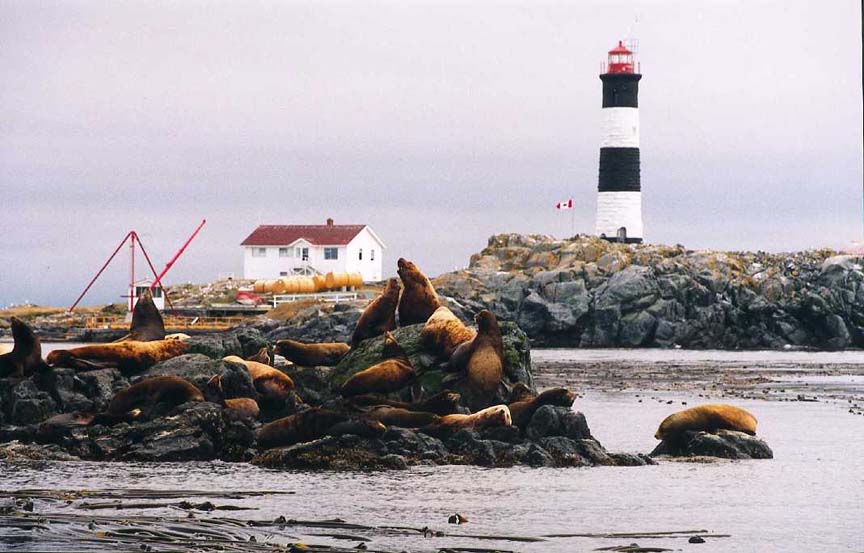
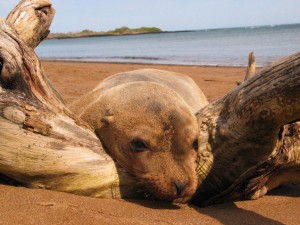

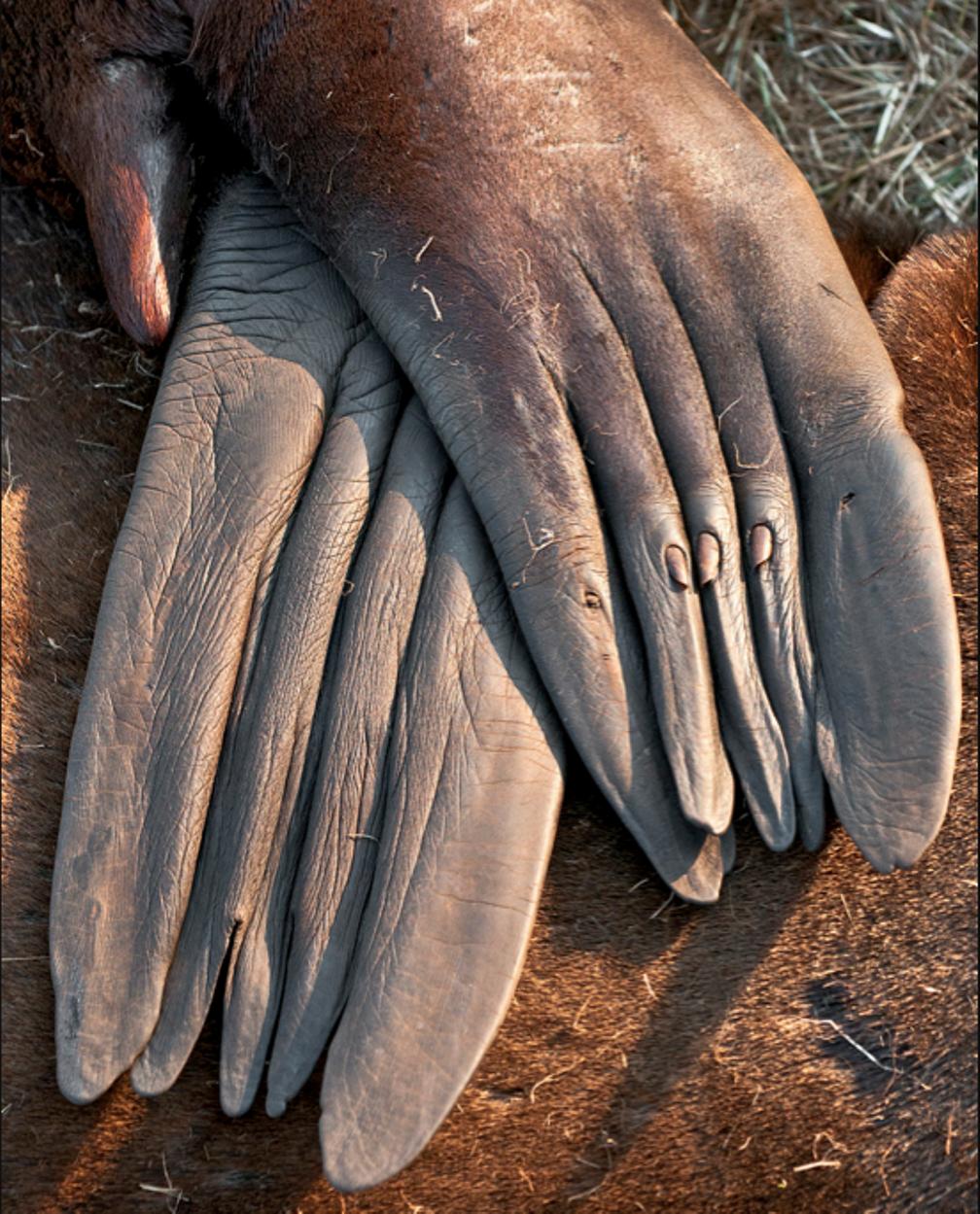
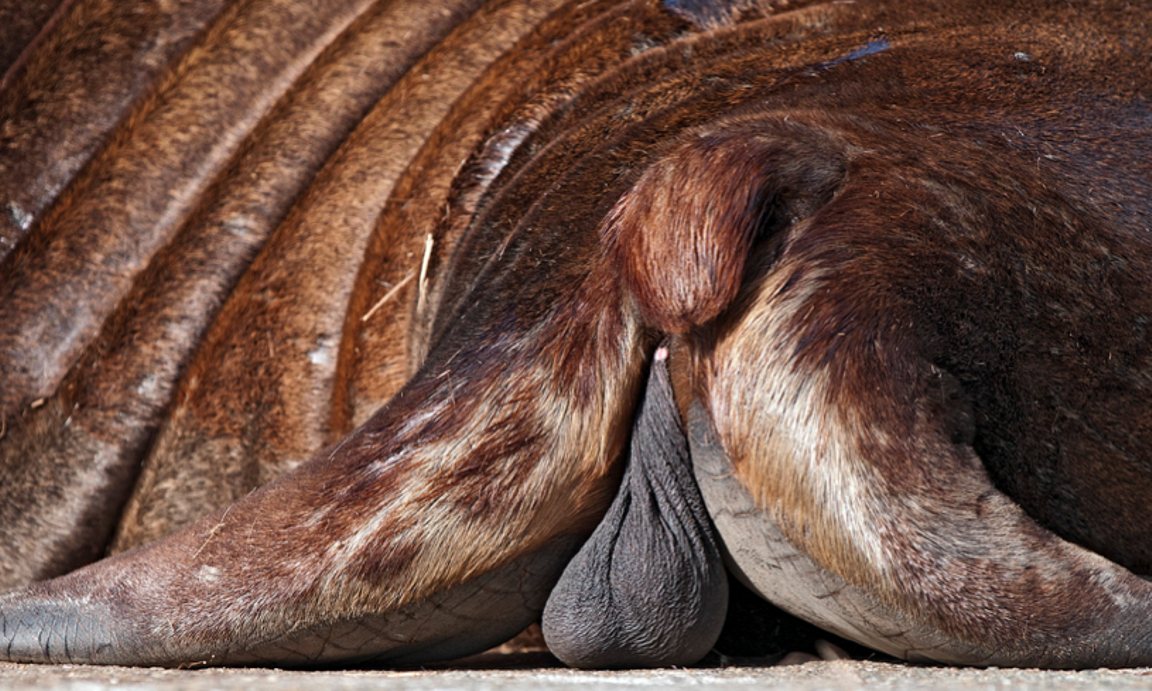
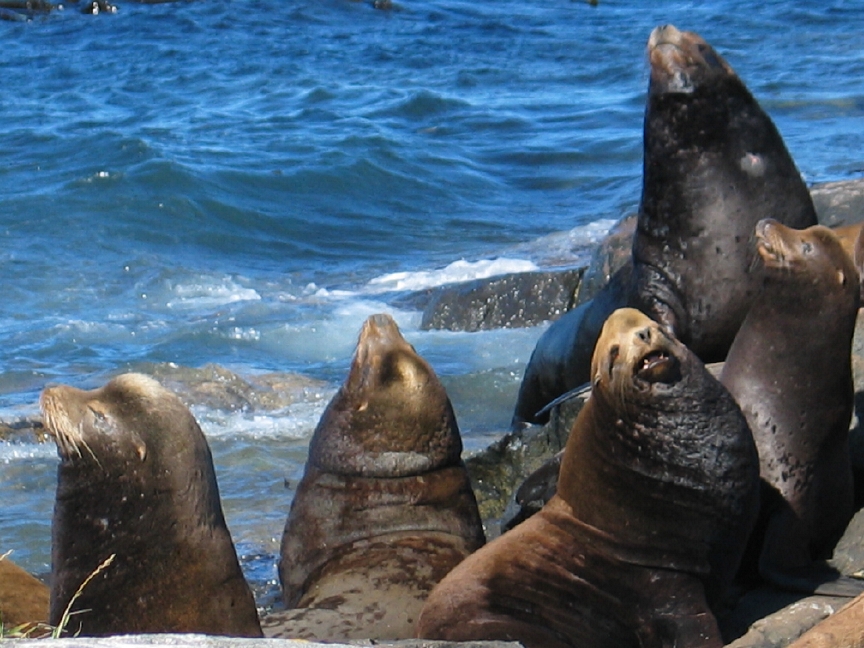
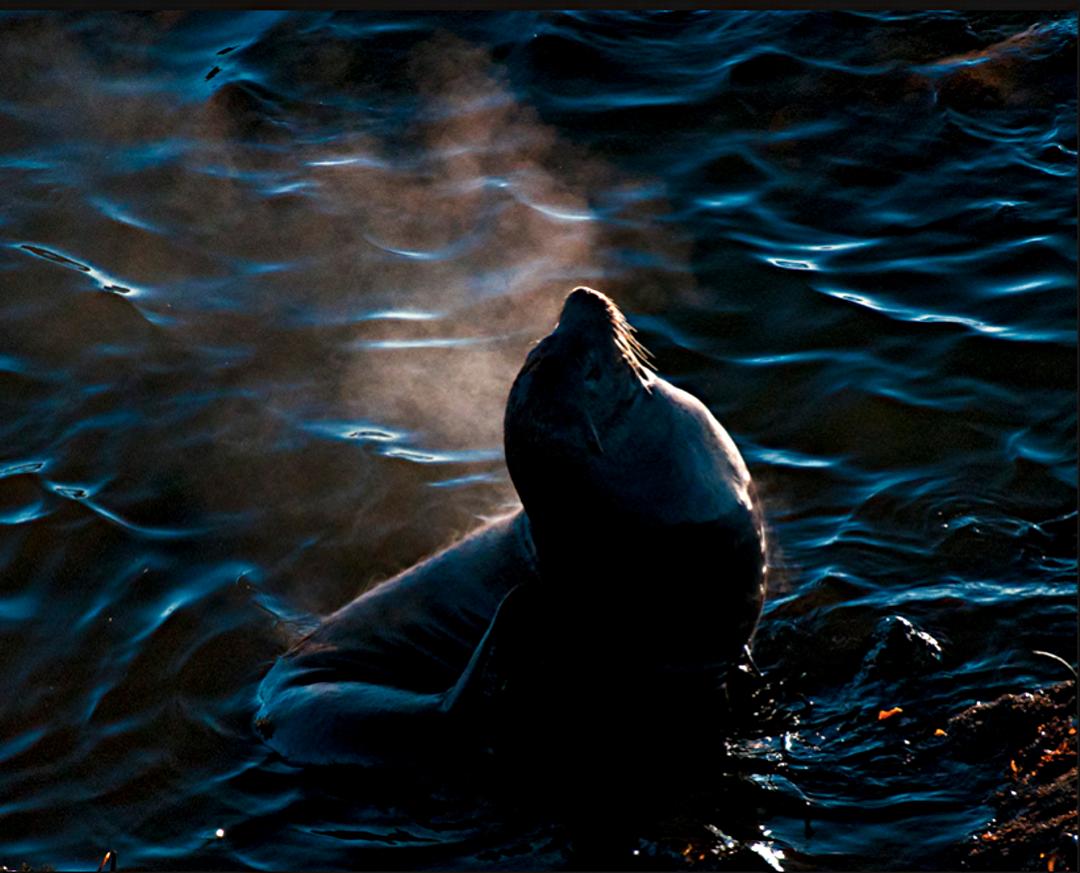
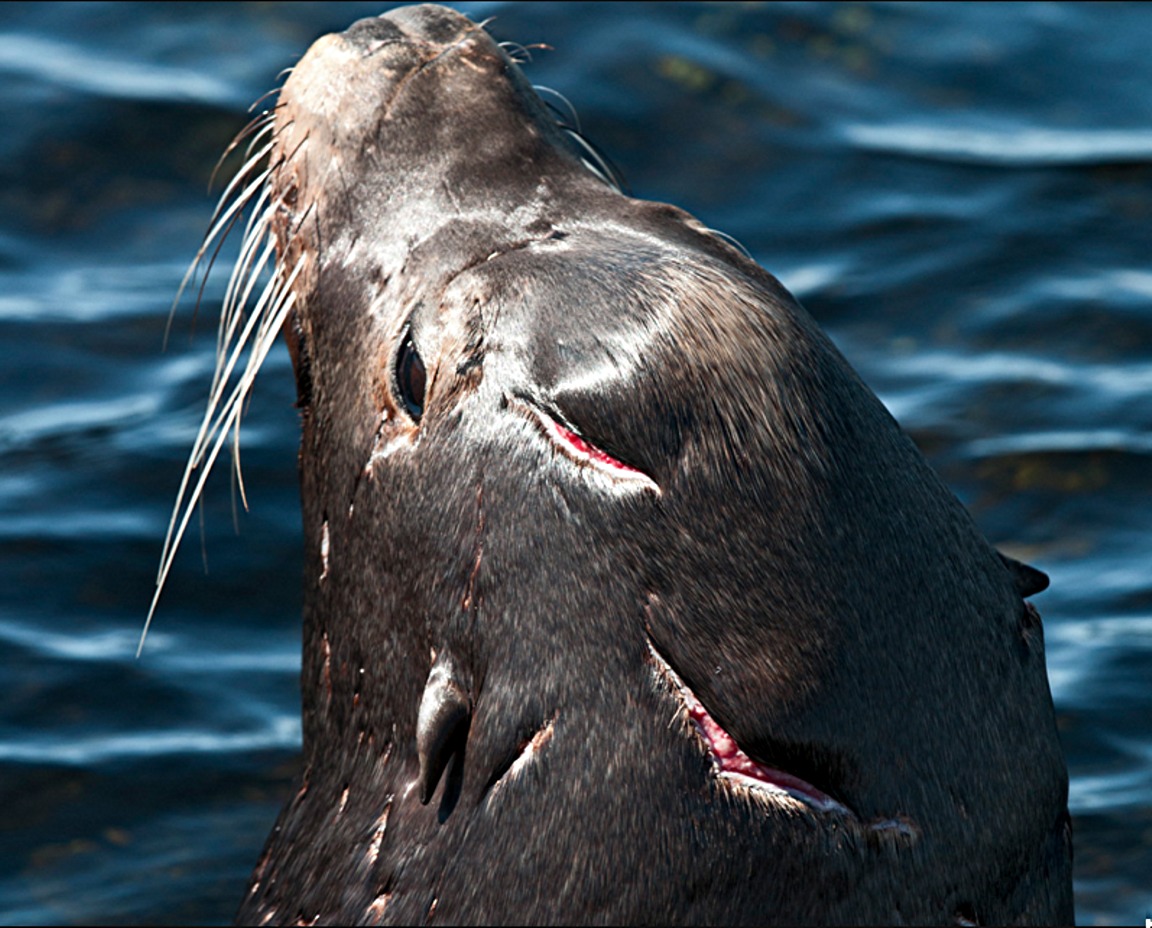
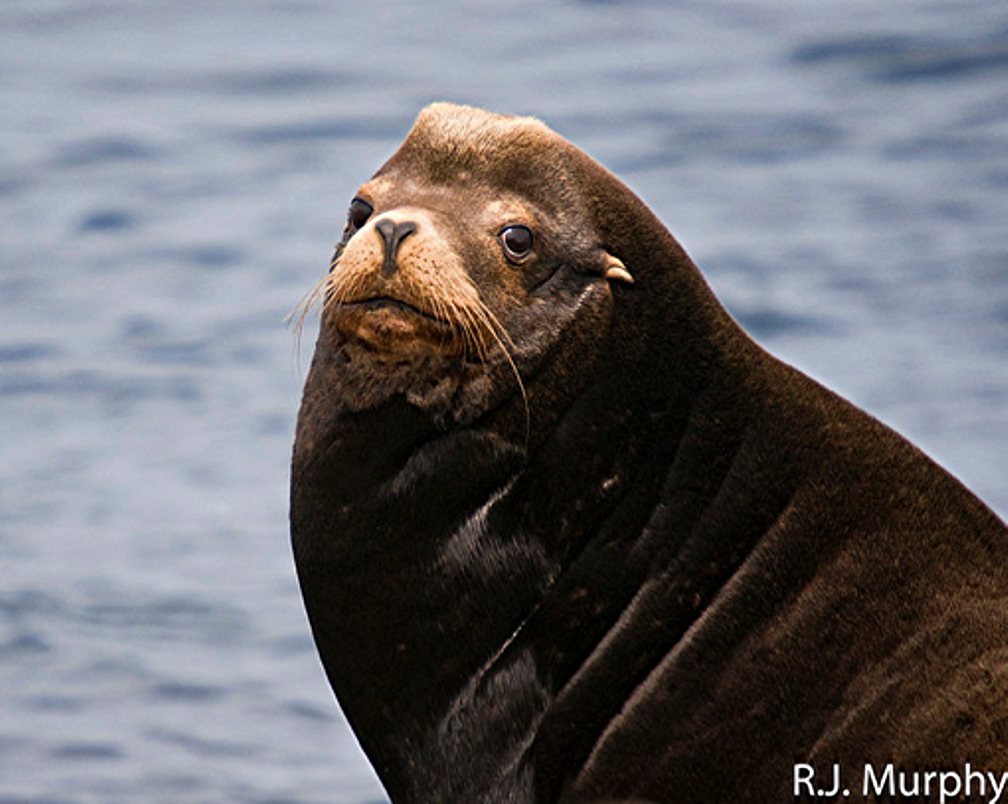
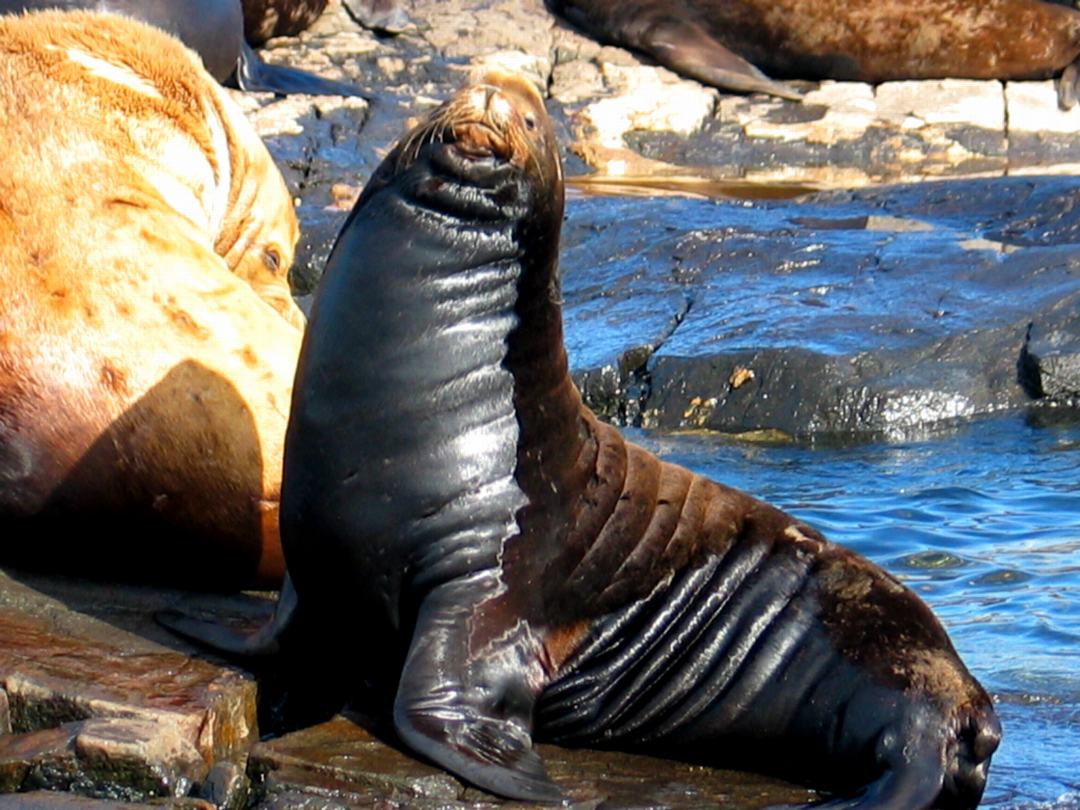
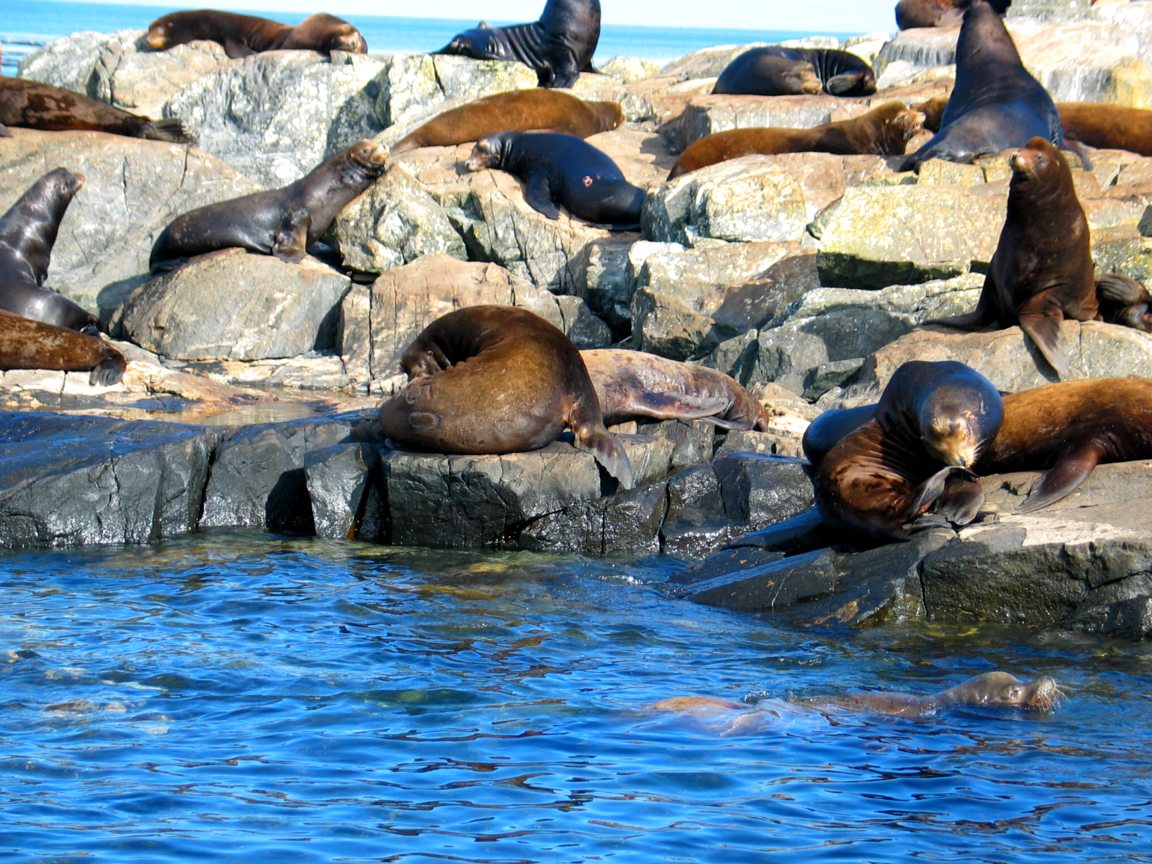
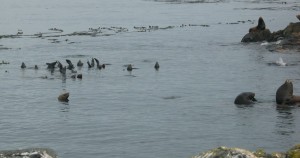
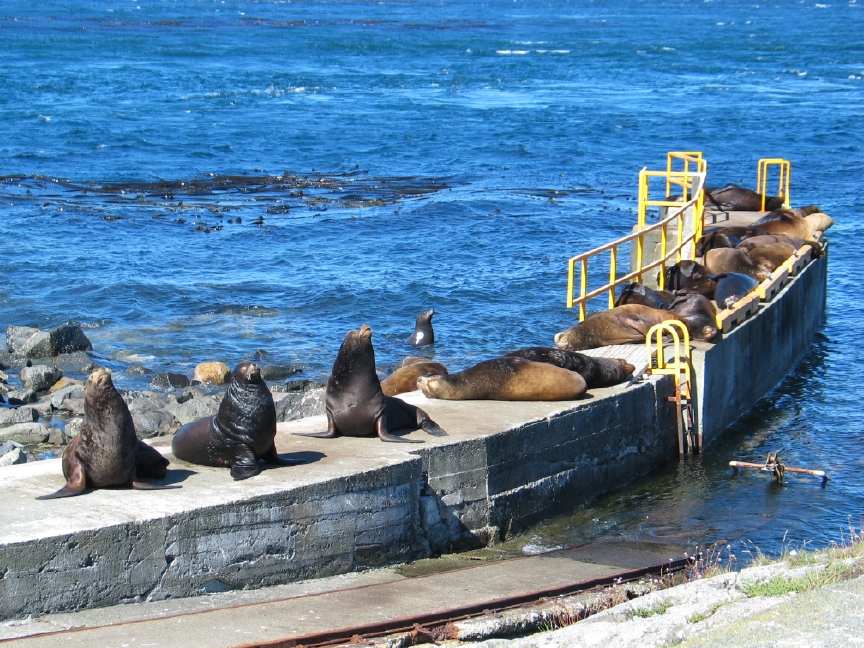

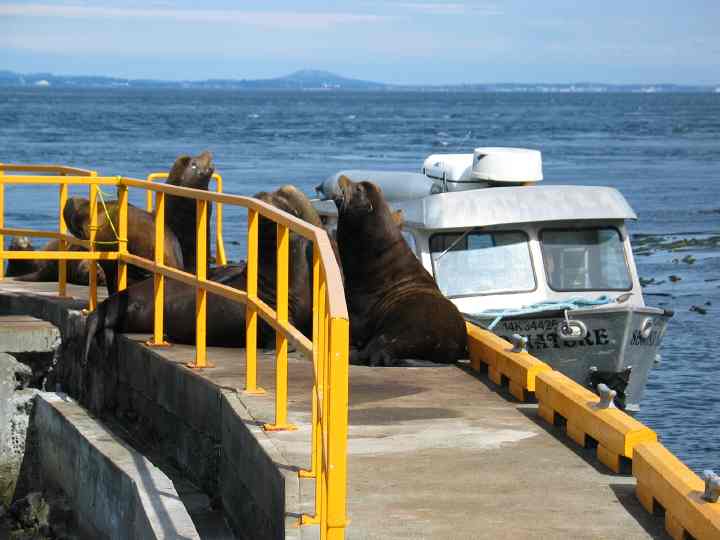
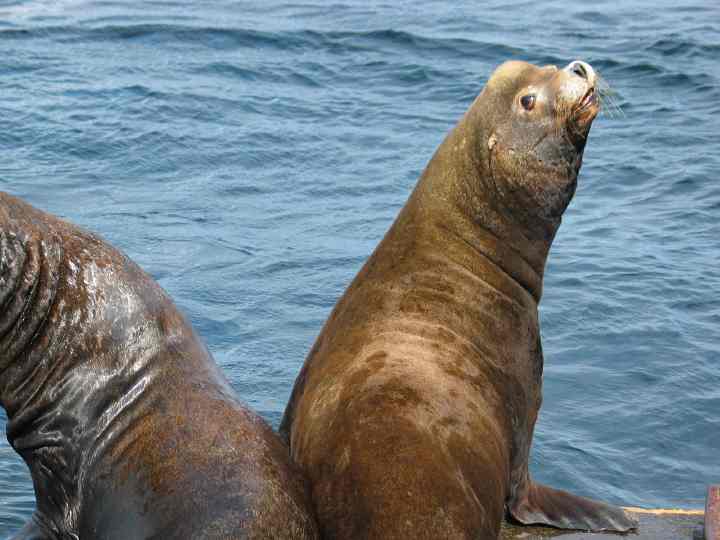
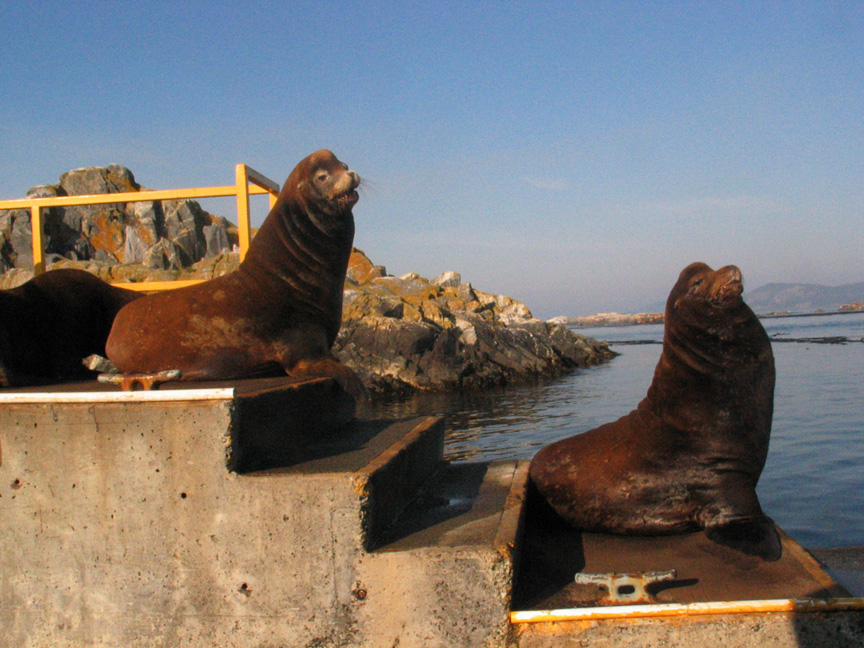
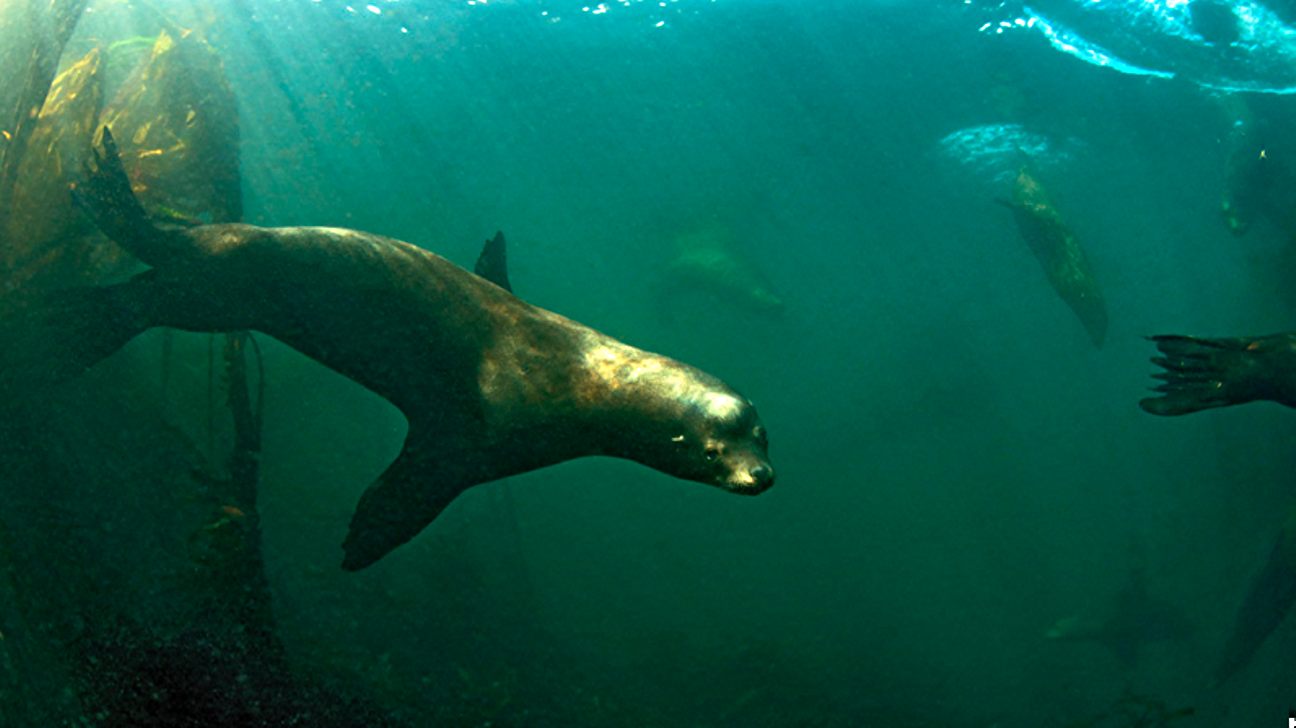
 The Race Rocks taxonomy is a collaborative venture originally started with the Biology and Environmental Systems students of Lester Pearson College UWC. It now also has contributions added by Faculty, Staff, Volunteers and Observers on the remote control webcams. Original by Caroline Mwaniki (PC yr. 27)
The Race Rocks taxonomy is a collaborative venture originally started with the Biology and Environmental Systems students of Lester Pearson College UWC. It now also has contributions added by Faculty, Staff, Volunteers and Observers on the remote control webcams. Original by Caroline Mwaniki (PC yr. 27)